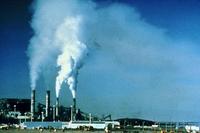Replacement of Obsolete Equipment likely to Drive Growth in the Russian and Ukrainian Electric Motors Markets
DUBLIN, Ireland--Research and Markets has announced the addition of Frost & Sullivan's new report: Emerging Opportunities in the Russian and Ukrainian Electric Motors Markets to their offering.
This research service titled Emerging Opportunities in the Russian and Ukrainian Electric Motors Markets provides an analysis of key trends as well as market drivers and restraints in the Russian and Ukrainian electric motors market. It further evaluates the potential opportunities within the different sectors in Russia and Ukraine and provides comprehensive forecasts with multiple measures for fast comparison, and a thorough opportunity assessment with discussion of specific customer issues and competitor information. Data is provided for the period 2002-2012 covering AC motors and DC motors and forecasts are segmented based on main application areas.
General Economic Growth Increases Demand for Motors
After a decade of industrial decline and stagnation caused by the transition from a centrally planned economy to a market economy, Russian industrial production began showing growth in 1999. During 2004-2005, oil prices, which contribute to a majority of Russian exports, increased almost three times, largely boosting the overall economic growth in the country. Likewise, the Ukrainian economy, during the same period benefited immensely from rising global metal prices, increase in exports and low oil and gas prices due to the country's unique relationship with Russia. This strong economic growth is consequently driving the demand for electric motors in the two countries, as new production lines, new infrastructure, increase in transportation of goods and growing travel all require electric motors.
While foreign electric motors remain too expensive for a majority of Russian and Ukrainian end users, frequency converters present excellent opportunities to enter the Russian and Ukrainian electric motors market. In doing so, participants will need to build sufficient product and brand awareness and establish operations in Russia or Ukraine. The Russian and Ukrainian market for frequency converters is dominated by foreign manufacturers as domestic companies do not possess the necessary technologies to manufacture them in conformance with modern standards, says the analyst of this research service. In the case of electric motors, however, the Russian and Ukrainian markets remain the stronghold of local and CIS manufacturers.
Replacement of Obsolete Equipment likely to Drive Growth
As a result of the transition from a centrally planned economy inherited from the Soviet Union to a market economy, most Russian companies had deferred capital investments for more than a decade. Consequently, a large majority of Russian production companies currently work with obsolete equipment that are seriously undermining their competitiveness. Considering this as well as the improving financial positions of these companies, most of the Russian manufacturers of electric motors expect the replacement cycle to intensify in the next few years. With a similar trend being witnessed across Ukraine, the demand for new motors has significantly increased during the last few years and is expected to continue to grow during 2006-2012.
Among the end-user sectors, the requirements of the transport sector in Russia and the Ukrainian metal and mining sector are emerging as major market drivers in their respective countries. While the metal and mining sector provides up to 40.0 per cent of all demand for electric motors in Ukraine, production of trolleybuses in Russia rose from just over a 100 machines in 2001 to 700 machines by 2005, says the analyst. Growth has also been profound in respect to underground and light railway networks and all these factors are contributing to the strong growth of the tractive motors market in Russia, which is expected to continue to show the double digit growth it witnessed in 2005 for the next five to seven years.



